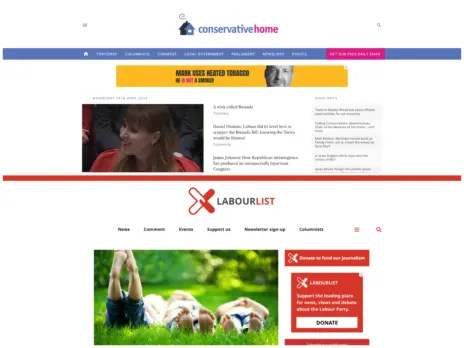
Bulk B2B subscriptions have “huge uncovered potential” for news publishers, according to a report from the International News Media Association (INMA).
The report judged the industry to be “at the early stages” of using B2B subscriptions as a serious revenue producer, as more publishers realise the opportunity to sell to businesses rather than just individual consumers.
The Wall Street Journal is among the publishers to have noticed an increased willingness from companies to pay for subscriptions, while a strategy change saw the Financial Times grow its subscriber base from 250,000 customers to more than 625,000.
Greg Piechota, INMA’s researcher-in-residence who authored the ‘The Growing Promise of B2B in Media’s Reader Revenue Model’ report, said: “I think this is about diversifying and using the opportunities [publishers] have available to them.
“For general news publishers, there might not be any other way for them to scale than to go after bulk acquisitions.”
Scroll down or click here for eight of the report’s biggest learnings
Piechota added that publishers need to do more to convince organisations their product is useful to them. “For them, it’s like, ‘Why should I subscribe to a general-interest newspaper? If [employees] want it, they should read it in their free time.’”
The FT found success after changing its pricing based on engagement, meaning corporate customers only pay for their readers who consume nine or more articles per month (the point at which users are more likely to renew).
Caspar De Bono, managing director of B2B at the FT, said the publisher had also provided each corporate account with a dedicated customer success manager so it can help the company meet its objectives.
It has also increased the amount of real-time data it shows its corporate customers, having found that if they feel they are achieving the results they want they will be more engaged, in turn making them more likely to renew and spend more money with the FT.
The Wall Street Journal similarly added account managers with engagement in mind.
Christina Komporlis, senior vice president responsible for professional membership, said: “The important part is keeping them engaged. It doesn’t do us any good to sell your whole organisation access to the Journal and only 1% of your employees are using it, because when renewal comes up, we’re not going to be able to convince you that it’s worthwhile.”
[Read more: Digital news subscriptions top 23m, Press Gazette research finds]
This led the WSJ to test a new approach for tailoring the content to the organisation and, instead of focusing on data and dashboards, ensure it has a solid core news proposition that is helpful to its employees.
Komporlis said: “Look at where you’re strong in your content because there’s probably market opportunity in the places you’re already good at. Then, you ask the customer: ‘This is our proposition– what else can we do to make you interested?’”
She added: “I do think companies want their employees to be world-class. They want them to be informed. Given that, publishers need to think, ‘How do we bring value to the company? How do we make employees smarter and better in their jobs?’ It’s skewing much more practical than just breaking news.
“News is the core of what [newspapers] provide, and it’s the most important thing. But selling news on its own isn’t going to fly. Now, it’s about figuring out how to give people access to the data, tools and services they need as part of the offering.”
Siri Holstad Johannessen, head of sales and marketing at Scandinavian media company Schibsted, told the report it was “focusing on moving [its products] from the ‘nice to have’ category to the ‘need to have’ category for employers”.
She recommended that publishers analyse their current B2B base to see if the potential for digitalisation is there, but said it was important to prioritise: “You can’t do everything at once.”
Schibsted created a new model, called CAN, which means 70% of efforts go to the core goal of providing the best customer experience, 20% go to the adjacent goal of developing new tools related to existing products, and 10% of attention goes on creating entirely new niche content products relevant for business settings.
Johannessen said B2B has a “huge uncovered potential”, adding: “As the media industry goes through a digital transformation… so does the market.”
The New York Times has been providing organisations with group subscriptions for many years but only started creating specific packages to appeal to companies in many different verticals in 2020.
“For example, one thing that people were very interested in last year was healthcare,” the paper’s head of global enterprise subscriptions, Andy Wright, said. “We could provide that information, and that carried over into other areas — from financial and business news all the way into entertainment and culture. And we were able to provide all of it.”
However, Wright warned it takes time and resources: “To do it right, you have to invest in it. You have to have the sales resources. You have to have the bandwidth and support to give your customers what they’re looking for. And then you have to be able to educate them about how to use the product and how to engage their employees so that you can retain them.”
Similarly Insider’s director of business development Katharina Neubert noted it is important to think about how the deal works for all parties or it is a waste of time: “Once we as a publisher don’t see the outcome of a partnership that we expected, we could have spent our time doing other things. Once a reader doesn’t see the expected outcome, they don’t interact.”
She added: “Keep an eye on win-win-win. This works very well for us. The audience isn’t at the table [when the partnership is formed], and once they are overlooked, it’s pretty certain the partnership will fail.”
Publishers must also bear in mind that they must keep a healthy balance between consumer and business subscriptions.
Report author Piechota said: “Are we talking about 10% of the subscriber base, or 20%, or 30%?
“Businesses are good. But, of course, also you don’t want to have a fluctuation that, when a recession comes, some businesses will be cutting costs and they might also cancel the subscription – and suddenly you might lose a lot of your customers.”
Things to consider from likes of the FT, New York Times, Wall Street Journal, Schibsted and Insider:
- Factor in the way businesses buy differently from consumers.
- Engagement-based pricing structures can be successful, as at the FT.
- Separate strategies for B2C and B2C sales funnels.
- Seek outcomes that benefit all three parties (the business, the reader and the publisher).
- Tailor subscriptions to the needs of the individual organisation.
- Use existing core strengths and coverage but think about how to package it.
- Position the subscription as an employer benefit.
- Use business events/webinars to target potential new clients.
Picture: Shutterstock
Email pged@pressgazette.co.uk to point out mistakes, provide story tips or send in a letter for publication on our "Letters Page" blog






